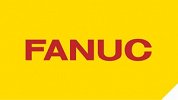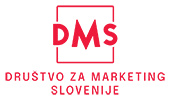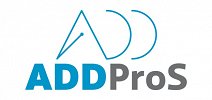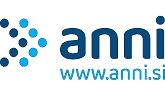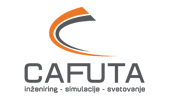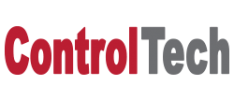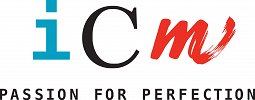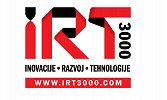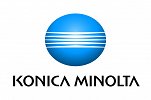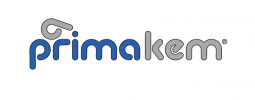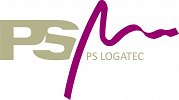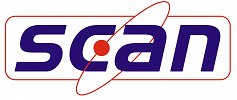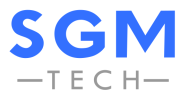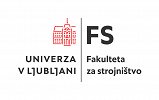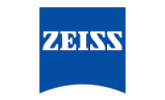- A case study of advanced scheduling in complex small-batch productionPeter Korenčan, Inden d.o.o.
dr. Andraž Žertek, Inden d.o.o.
dr. Dušan Božič, Inden d.o.o.
Boštjan Malavašič, Inden d.o.o.
In complex, small-batch production, effective scheduling is crucial for optimizing manufacturing processes. In this paper, we present a case study of implementing the Planska tabla solution in a manufacturing company. Through this implementation, we achieved improved transparency, optimized production planning, and reduced lead times. The solution enables a comprehensive overview of manufacturing processes, facilitates rapid adaptation to changes, and ensures efficient resource utilization. We will present the key challenges the company faced before implementing the solution, the implementation process, and the results achieved.
- Achieving exceptional path accuracy of 0.03mm and energy efficiency with ABB OmniCore robot controllers.Tomaž Lasič, ABB d.o.o.
After 50 years of innovation, ABB has introduced the sixth generation of robot controllers now called OmniCore. The OmniCore controller enables a new innovation, Ultra Accuracy, for collaborative robots GoFa. In addition to achieving excellent position repeatability of 0.02 mm, GoFa Ultra Accuracy now also achieves exceptional path accuracy of 0.03 mm. The broadly designed controller concept also achieves a breakthrough in energy efficiency with a regenerative power supply that returns braking energy back to the grid. Additional energy efficiency is enabled by software for automatic generation of robot trajectories. Trajectories can be generated by the program in advance in simulation (off-line) or directly before movement (on-line).
- Agile Onboarding of Employees in Complex Manufacturing Systems through Digitalized TrainingŽiga Gosar, ELVEZ, d.o.o.
Matija Zupančič , Art Rebel 9
Marina Panoska, ELVEZ, d.o.o.
Klemen Babuder, Art Rebel 9, d. o. o.
The ONBOARD-AI project focuses on developing an agile, digitalized onboarding process for new employees in complex manufacturing systems. It leverages advanced technologies such as Human-Machine Interaction (HMI) and Conversational AI to reduce training time, enhance skill acquisition, and boost productivity. An interactive digital training system will be developed, incorporating visual presentations, video tutorials, and gamified simulations of workplace tasks. Additionally, AI-driven analytics will assess trainee performance in real-time and adapt training content accordingly. The project aims to reduce onboarding time by 30%, increase employee proficiency, and improve training experience. The experiment is beeing conducted at ELVEZ, a company specializing in plastic processing and cable harness manufacturing in cooperation with Art Rebel 9.
- An Example of RFID Technology Application in IndustryMiroslav Gojić, EVOKS
A company specializing in the development and implementation of RFID-based solutions presents in this paper a successful example of applying this technology in an industrial setting. RFID (Radio Frequency Identification) enables automatic identification and tracking of objects using radio waves, significantly improving efficiency, accuracy, and traceability of processes across various industries—from manufacturing and logistics to energy and safety sectors.
In the presented case, a customized RFID solution was implemented in a manufacturing facility, where effective inventory management and control of material flow within a complex logistics system were crucial. By using passive RFID tags and stationary readers, the company achieved full transparency of internal material movement, reduced inventory errors, and shortened operational execution times.
The benefits of this implementation also became evident through the integration with existing information systems, enabling the client to make better decisions and optimize resources. This paper highlights the importance of a comprehensive approach when deploying RFID technology and the necessity for solution flexibility to meet specific user requirements.
- Analysis of material change impact on kitchen robot\'s drive unit housing noise level and psychoacousticsTadej Novaković, BSH Hišni aparati d.o.o. Nazarje
David Enci, BSH Hišni aparati d.o.o. Nazarje
Boštjan Zafošnik, BSH Hišni aparati d.o.o. Nazarje
Kitchen machines are multipurpose small domestic appliances used for variety of food processing applications such as dough kneading, cream whipping, blending, etc. The variety of attachments that are used on the base appliance require different torque and rotational velocity specifications. A solution to the requirements is a drive unit with several outputs. The complex planetary and worm gear transmission generates noise, predominantly of discrete character. The drive housing is the contact point to the appliance that transmits structural vibration from the gear meshing to the rest of the appliance. The noise is emitted from the large surfaces of the appliance housing. As the drive housing represents the main path for the generated forces, its material properties have an influence on the emitted noise levels. Two drive housing materials were analysed. Several noise characteristics, such as the sound power level and psychoacoustic metrics were compared. The sound was recorded according to EN60704-2-11 and ISO3744. Tweenty samples of assembled appliances were analysed for each material. The results show the difference between samples of same material are far greater than the average difference between materials, presenting the fact that production line variations have a greater influence on the sound characteristics than the material change. Additionally, it is evident the outlying appliances exhibit a variation in gearing geometry that can be potentially recognised by observing the psychoacoustic characteristics of the emitted noise or vibration.
- Automated supply of robotic cells with products using an automated guided vehicleMaria Yakimowska, LTH Castings d.o.o.
Vinko Drev, LTH Castings d.o.o.
LTH Castings d.o.o. has been successfully expanding its operations for many years, continuously investing in the automation of production processes. Despite the current high level of automation, further investments in this area are essential, as the industry is advancing rapidly and requires constant improvements. Within the Process Automation department, located at the Ljubljana plant, we have implemented and launched the company\'s largest and nearly fully automated production line in recent years. The line includes four robotic cells with eight machining centers and a pallet conveyor system, which ensures the distribution of products from the robotic cells through the washing system to the cleanroom for further processing.
Until a few months ago, the robotic cells were manually supplied using hand-operated forklifts. However, to achieve complete automation, we have introduced supply management using an Automated Guided Vehicle (AGV).
The AGV system enables optimized and automated material transport between the intermediate storage and robotic cells, reducing manual interventions, increasing productivity, and improving workplace safety. Its primary function is to transport designated containers with different product types from storage to robotic cells and return empty containers to their designated positions in storage. This achieves a high level of autonomy and ensures a seamless production process. The complete implementation, along with the key advantages and disadvantages of the system, will be presented in detail in this paper.
- Automatisation of preset and in-process measurementGregor Treska, Trecon d.o.o.
Tim Herbertson, Erowa AG
Matic Poberžnik, Hexagon Metrology S.P.A.
QMeasure is a process plugin for CAD software environments. It operates on the principle of an open ecosystem, enabling collaboration with various CAD systems on one side and measurement machines from different manufacturers on the other. In Slovenia, a good example of best practice can be seen at Domel, where the plugin integrates the Catia CAD system and Hexagon’s PC-DMIS measurement software into the production process. The plugin improves zero point offset measurements and in-process measurement.
In preset measurement, it enables the rapid creation of measurement programs using CAD models, reducing preparation time and ensuring precise data transfer. With full integration into ERP, PPS, CAD, and CAM systems, it ensures reliable communication and consistency in production processes. The automated data flow minimizes human errors and optimizes presetting procedures.
For in-process measurement, QMeasure automates quality control during machining. It allows the addition of any number of predefined measurement cycles for checking the accuracy of workpiece and electrode machining, which are used in sinker EDM processes. This is achieved through automatic loading of the measurement program into the CMM and measurement without manual intervention. Deviations are detected immediately, enabling timely corrective actions, reducing waste, and maintaining consistent quality. By incorporating measurement processes into production, we enhance process stability, improve efficiency, and ensure more reliable products. The integration of such processes is essential in smart manufacturing environments, where they enable a seamless transition from presetting to final quality control, optimizing the entire production process.
- Challenges and Opportunities for Small Manufacturing Companies in the Era of Rising Costs and Global CompetitionTanja Kavčič, Precisium d.o.o.
Jakob Robič, Jakob Robič s.p.
Karsten Kranz, Insourcify Gmbh
In recent years, manufacturing companies have faced increasing pressures—lower product and labor costs, rising energy expenses, and growing bureaucratic burdens. At the same time, competition is intensifying, making business operations even more challenging. At Precisium, we have been dealing with these challenges for an extended period, as we previously specialized in manufacturing control fixtures for major Slovenian companies in the automotive industry. However, due to technological advancements, new dimension verification methods, and the bankruptcy of key clients, we were forced to restructure our program and seek new markets.
As a small company, we had to find cost-effective solutions in digitalization, automation, sales, and internationalization. Key steps included developing an active online presence, launching an e-commerce platform, identifying potential customers through social media and applications, and leveraging the personal approach of our German sales representative, who builds a network of partners and converts warm leads into long-term customers.
Co-author Jakob Robič will present effective strategies for companies establishing an online presence, while Karsten Kranz will share his expertise in acquiring new customers in foreign markets. Together, we will demonstrate how even small businesses can successfully adapt to industry challenges and seize new business opportunities.
- Comparison of Advanced 3D Scanning Technologies for Quality Control of Industrial ProductsJakob Fabjan, Rudolfovo – znanstveno in tehnološko središče Novo mesto
Adela Pišmo, Rudolfovo – znanstveno in tehnološko središče Novo mesto
Vesna Pungerčar, Rudolfovo – znanstveno in tehnološko središče Novo mesto
Slavko Arh, Rudolfovo – znanstveno in tehnološko središče Novo mesto
3D scanning is a non-contact technology that enables the conversion of a physical object into a digital model. It is widely used in industry for reverse engineering and quality control, as it allows for verification of product conformity with technical specifications. However, conventional 3D scanning methods have certain limitations – they struggle to detect internal defects such as cracks, inclusions, or material inhomogeneities, which can significantly impact a product’s lifespan.
This study compares three methods for capturing three-dimensional data of an aluminium industrial component: structured light 3D scanning, laser 3D scanning, and industrial computed tomography (CT). While the first two methods primarily capture external geometric features, CT scanning is a non-destructive technology that provides insight into the internal structure of the material. This allows for the detection of hidden defects and the assessment of structural integrity of the product. The aim of this research is to compare these techniques in terms of measurement accuracy relative to the CAD model, as well as the quantity and quality of the data they provide. The results indicate that combining optical 3D scanning and CT analysis enables a more comprehensive quality control approach, which is crucial for ensuring the reliability and longevity of industrial products.
- Consideration of solar energy availability for predictions of operational capacity of automated agricultural land cultivationDomen Šeruga, Univerza v Ljubljani, Fakulteta za strojništvo
Primož Poredoš, Univerza v Ljubljani, Fakulteta za strojništvo
Dominik Kozjek, Univerza v Ljubljani, Fakulteta za strojništvo
Aleš Gosar, Univerza v Ljubljani, Fakulteta za strojništvo
Marko Nagode, Univerza v Ljubljani, Fakulteta za strojništvo
Jernej Klemenc, Univerza v Ljubljani, Fakulteta za strojništvo
Automation of a process requires precise knowledge of the influential factors involved. One option for sustainable cultivation of agricultural land within the framework of green urban communities of the future is possible by using an automated fleet of cultivating robots. These would optimally care for the allocated plot of land depending on the available solar energy source. Since the source of available energy changes with the change of seasons, several factors must be considered when designing and developing the size of power supply and optimisation algorithms for the operation of an automated fleet of cultivating robots. In this study, the available solar energy in Slovenia in the area around the city of Ljubljana is addressed and the possibility of powering a selected Li-ion battery pack is studied. Specifically, the consequences of the power fluctuation on the availability of the automated fleet of cultivating robots are dealt with. The battery pack under consideration consisted of 7 Li-ion battery cells with a total capacity of 20 Ah and a nominal operating voltage of 24 V. During typical use with power of 100 W, such a battery pack could provide approximately 4 hours of operation for a single robot. It turns out that the selected size of the photovoltaic panels can only charge a single battery pack on a cloudy day in January. However, due to the fluctuations in available solar energy this number can rise to 20 battery packs on a sunny day in January, and to 55 battery packs on a sunny day in June.
- Design of Connecting Joints in Laser CuttingMarko Simonič, Fakulteta za strojništvo, Univerza v Mariboru
Kristijan Šket, Fakulteta za strojništvo
David Potočnik, Fakulteta za strojništvo
Jernej Hernavs, Fakulteta za strojništvo
Tadej Peršak, Fakulteta za strojništvo
Simon Klančnik, Fakulteta za strojništvo
Mirko Ficko, Fakulteta za strojništvo
Laser cutting of small-sized products in large batches complicates manual separation and handling, causing production bottlenecks. An innovative chain-link method is presented, where products are sequentially connected in a chain. Experimental testing on a steel plate (3 mm thick, material 1.0038), cut with a Bodor i7 laser machine (3 kW), was conducted to optimize three parameters of rhomboid connecting links: distance between pieces (A), contact area width (B), and link angle (C). Using a random forest machine learning model, the minimal residual was predicted: 0.086 mm for length (A=4.0 mm, B=0.2 mm, C=53.3°), 0.301 mm for width (A=3.0 mm, B=0.2 mm, C=30.0°), and 0.019 mm for thickness (A=3.0 mm, B=0.356 mm, C=30.0°). The proposed method enhances post-cutting handling efficiency, reduces physical strain on workers, and enables automation in precision industrial applications. In a parallel finite element analysis (FEA), stress-strain conditions in the joints are modeled to predict the breaking point. The obtained results are then compared with experimental values. The research aims to design connecting links that balance sufficient chain rigidity for easy separation of individual pieces, contributing to improved ergonomics and time efficiency in laser cutting of large batches of small products.
In the parallel computational (FEA) analysis, we model the stress–strain conditions in the joints and predict the fracture point. The obtained results are compared with the experimental values. The purpose of this research is to determine the design of bridging tabs that balances sufficiently high chain stiffness with the ease of separating individual pieces. In doing so, we contribute to improved ergonomics and time efficiency in the laser cutting of larger series of smaller products.
- Development and implementation of PDCA cycleAndrej Zadravec, Plastika Skaza d.o.o.
Nik Škorja, Plastika Skaza d.o.o.
PDCA stands for Plan-Do-Check-Act, also known as the Deming Cycle or Shewhart Cycle. It is a continuous process improvement method used to identify and solve problems and make improvements in a systematic and efficient manner. The four steps of PDCA are: Plan, where a problem or opportunity is identified and a plan is developed to address it; Do, where the plan is implemented; Check, where the results of the implementation are measured and analyzed; and Act, where any necessary adjustments are made based on the results. The process is then repeated to continue making improvements in continuous principle.
- Development and manufacturing of a High Temperature Guarded Hot Plate Apparatus (GHP)Rok Markežič, CAFUTA, inženiring, simulacije in svetovanje d.o.o.
Tomaž Kastelic, CAFUTA, inženiring, simulacije in svetovanje d.o.o.
Gašper Cafuta, CAFUTA, inženiring, simulacije in svetovanje d.o.o.
In many applications, high-temperature thermal insulation materials are essential for energy efficiency, safe operation, and optimal performance. Understanding their thermal properties is crucial. The Guarded Hot Plate (GHP) method is a standardized technique for measuring the thermal resistance of materials across various temperature ranges. This study presents the development and manufacturing of a GHP apparatus designed to measure thermal resistivity of materials in the temperature range from 50 °C to 800 °C.
The development phase began with 3D conceptual design in Catia and coupled thermal-electric simulations in Abaqus to determine the power requirements of coil heaters and optimize their shape for uniform temperature distribution on hot and cold plates. Heat transfer analysis, considering conduction, convection, and radiation, guided the design of the core GHP structure.
Following this, a detailed 3D design was created in Catia, and materials and standard components were selected. Static analysis of the hot and cold plates in Abaqus assessed their maximum deflection under thermo-mechanical loads to ensure optimal materials selection.
Finally, the manufacturing process, control system and graphical user interface development of the GHP apparatus will be presented.
- Development of a measurement system for the calibration of precise displacement sensorsLuka Čas, Fakulteta za strojništvo Univerze v Mariboru
Bojan Ačko, Fakulteta za strojništvo Univerze v Mariboru
Rok Klobučar, Fakulteta za strojništvo Univerze v Mariboru
Precision displacement sensors are increasingly used in modern industrial and research environments and play an important role in all areas of dimensional metrology. In industrial companies and metrology laboratories, these sensors are often used to calibrate various standards and measuring instruments due to their sub-micrometre accuracy. With the increasing use of precision displacement sensors, the demand for their calibration is also increasing, as this is essential for traceable measurements that can be referenced to the SI unit (metre). Despite the widespread use of such sensors, there is still no commercially available system for their calibration that provides the required metrological performance. For this purpose, the Laboratory for Production Measurements at the Faculty of Mechanical Engineering of the University of Maribor has developed a unique special measuring system that enables the fully automatic calibration of precision displacement sensors for length measurements up to 150 mm. The proposed system is based on a linear moving micrometer station mounted vertically on a base plate. Parallel to the station is a cantilevered support with clamps on which the sensor to be calibrated is clamped. Particular attention was paid to analyzing and validating the cosine error of the sensor before calibration. For this purpose, an algorithm was developed that uses an image processing method to enable the precise alignment of the sensor\'s measurement axis with the axis of the guides of the translation station. A laser interferometer based on modern diode laser technology is used as a reference sensor in the system. The presented development represents an important scientific and applied contribution in the field of metrology and fulfills the need of the advanced Slovenian industry for traceability of precise instruments for dimensional measurement.
- Development of a methodology for calculating the carbon footprint of aluminium semi-finished products manufactured by the Impol groupGašper Gantar, Visoka šola za proizvodno inženirstvo
Barbara Pigac, Impol d.o.o.
Sonja Tomazini, Impol d.o.o.
Matej Steinacher, Impol d.o.o.
Climate change resulting from anthropogenic activities has been identified as one of the greatest challenges facing the world and will continue to affect businesses and citizens for decades to come. The Impol Group manufactures various semi-finished products (extruded products, drawn products, discs, thin strips, foils, etc.), which are incorporated by their customers into final products. Customers, especially those in the automotive industry, are demanding information about the carbon footprint, sometimes even for each individual delivered batch. Therefore, it was necessary to develop and validate a method by which the Impol Group automatically calculates product carbon footprints for: 1) product groups, calculated based on statistical data on the consumption of input materials and energy for the previous calendar year, and 2) specific batches, calculated based on actual data on the input materials used. The issued declarations are prepared in accordance with ISO 14026.
- Development of a robotic system for random bin picking using deep neural networks and a robot operating system (ROS2) Rok Pahič, Moderne tehnologije d.o.o.
Iurii Vandiak, Moderne tehnologije d.o.o.
Urban Kolman, Moderne tehnologije d.o.o.
For smaller production batches with variable workpiece shapes, workpieces are usually stored and transported unstructured between automated processes. At the entrance to such a process, the parts need to be placed in an orderly position, which in most cases is still done manually. Robotic random bin picking systems allow such tasks to be robotized. The developed system uses a 3D camera to detect the contents of the bin. Based on the captured data, a recognition algorithm finds the bin and locates the objects inside. Using the robot\'s geometric data, the next step is to generate a robot trajectory for picking up the object that is kinematically feasible and collision-free with the environment. Object detection and localisation is performed using deep neural networks and point clouds. All system components are integrated using a robotic operating system (ROS2). This integration allows the use of 3D cameras and robots of different types and manufacturers. The system is controlled and configured via a graphical interface developed using web technologies.
- Digital metalworking servicesZoran Svenšek , Seco Tools SI d.o.o.
In today\'s world, the accessibility and speed of information are paramount. At Seco Tools, we have developed digital services that simplify our daily tasks in metalworking.
- Digital twin of the laboratory mechatronic stamping toolTomaž Pepelnjak, Fakulteta za strojništvo, Univerza v Ljubljani
Uroš Štuklek, Dafra kontakt tehnologije d.o.o.
Ema Stefanovska, Fakulteta za strojništvo, Univerza v Ljubljani
Albin Sirc, Egasi d.o.o.
Dejan Rožič, Dafra kontakt tehnologije d.o.o.
Jure Peternel, Egasi d.o.o.
In the project \'Intelligent mechatronic progressive stamping tool for the production of combination sets of products\', Dafra kontakt tehnologija d.o.o. optimises the performance of the mechatronic progressive stamping tool by adapting the performance of the mechatronic tool to the requirements of the product design. The objectives of the mechatronic tool are:
- To produce multiple products in a single tool,
- To produce stamped geometrically similar products with minimised waste when changing the product type on the selected tool,
- To control the process and increase the quality of the stamping process by creating a digital twin of the forming process.
To meet the above objectives, the collaboration of the industrial partners Dafra kontakt tehnologija d.o.o. and Egasi d.o.o. and the scientific research partner of the Faculty of Mechanical Engineering in Ljubljana was indispensable.
The paper presents the first development phase of the project, in which the test tool was used to verify the objectives set for the developed punch tool on one mechatronic position. The developed actuator from Egasi was used to establish the required settings of the stamping punch to produce the part\'s set geometry. In parallel, the quality of the tool operation was monitored by a digital twin of the tool, and a corresponding feedback loop for tool control and operation was established.
- Effect of Sample Orientation on Surface Finish in Plasma Electrolytic PolishingJoško Valentinčič, Univerza v Ljubljani, Fakulteta za strojništvo
Jithinraj Edaklavan Koroth, Univerza v Ljubljani, Fakulteta za strojništvo
Plasma Electrolytic Polishing (PEP) is a promising post-treatment technique for producing smooth and reflective metal surfaces. The efficiency of material removal and the resulting surface roughness across different areas of a component are strongly influenced by the distribution of current density, particularly at surface protrusions. This research explores how the orientation of stainless-steel flat and cylindrical specimens within the electrolyte bath affects their final surface quality during PEP. The findings show that positioning the samples at 60° and 90° angles yields the most favourable surface finishes, characterized by even material removal and improved gloss. Cylindrical samples oriented at 60° demonstrated the most uniform surface texture due to optimal electrolyte circulation, while flat samples showed enhanced results at both 60° and 90° orientations.
- Ensuring product quality with tool pressure measurementsRok Glinšek, Hella Saturnus Slovenija d.o.o.
Boštjan Škrlj, Hella Saturnus Slovenija d.o.o.
Matija Obolnar, Hella Saturnus Slovenija d.o.o.
In the production of technically demanding products, such as automotive lighting, process stability is essential to ensure high quality. The precision requirements are very high, as these products must meet strict technical and safety standards. Uniform cavity filling in plastic injection molding is crucial to prevent defects and achieve consistent results. Challenges in ensuring uniform cavity filling emerged in production, prompting us to search for a solution that would enhance process stability and reduce errors. This led to the decision to implement an advanced system that optimizes the process, improving product quality and increasing production efficiency.
- Evaluation of Battery Cells and Modules in the Automotive Industry Using CT TechnologyLuka Kurtalj, TOPOMATIKA d.o.o
Josip Kos, TOPOMATIKA d.o.o
Nenad Drvar, TOPOMATIKA d.o.o
Tomislav Hercigonja, TOPOMATIKA d.o.o
Ena Peričić, Rimac Technology d.o.o
Andrea Perković, Rimac Technology d.o.o
The paper provides an overview and highlights the advantages of using industrial computerized tomography (CT) in evaluating battery cells and modules intended for electric vehicles in the automotive industry.
The main advantage of CT technology lies in its non-destructive nature, which enables the creation of a digital twin of the actual product, allowing for a detailed insight into the actual condition of the battery cell without the need for physical disassembly.
For battery system manufacturers, CT technology facilitates the digital transformation of processes in product development and quality control, offering faster and more accurate identification of manufacturing defects, damage analysis after rigorous testing, and ensuring safety in mass production of new battery systems.
The paper presents the results of three-dimensional measurements of battery cells from the product development phase, obtained using the ZEISS Metrotom CT system. Data evaluation was conducted using the ZEISS Inspect X-Ray software package, which enables comprehensive analysis of digital twins.
- Extension of hydraulic oil service life and Its impact on energy efficiency Milan Kambič, Olma d.o.o.
Aleš Hrobat, Olma d.o.o.
Jošt Mohorko, Olma d.o.o.
Vito Tič, Olma d.o.o.
The service life of hydraulic oil is significantly influenced by operating conditions as well as its composition. Manufacturers have access to different groups of base oils for the production of hydraulic oils. Due to the varying properties of these groups, the service life of the final product also differs.
This paper examines hydraulic oils based on different groups of base oils, their fundamental characteristics, and the differences between them. Furthermore, it presents the new series of Energolubric hydraulic oils, focusing on the extension of service life compared to conventional mineral-based hydraulic oils. The results of comparative testing of the oxidation stability of different oils will be presented. Additionally, the paper will discuss the aspect of energy efficiency in the operation of hydraulic systems, which is also influenced by the hydraulic oil used.
- Gold nanoparticle conductive dispersions for printed circuit boardsLan Kresnik, Fakulteta za strojništvo, Univerza v Mariboru
Rebeka Rudolf, Fakulteta za strojništvo, Univerza v Mariboru
Peter Majerič, Fakulteta za strojništvo, Univerza v Mariboru
Darja Feizpour, Inštitut za kovinske materiale in tehnologije
Printed circuit boards are an extremely important part of satellite technology, as they are used as filters/signal carriers, for data processing and communication. High-frequency signals are transmitted through the top surface of the circuit board, known as the skin effect. Consequently, the aim is to achieve low surface roughness of the circuit, as this reduces the loss in signal transmission. Different dispersions are used to produce the circuits, which can be printed by different methods into the required shapes. For this purpose, a dispersion based on gold nanoparticles (AuNPs) synthesised by ultrasonic spray pyrolysis and stabilised with polyvinylpyrrolidone (PVP) in water was prepared. The AuNPs were then dried to remove water. The dried AuNPs were then dispersed in ethanol to prepare a dispersion for line printing by plasma technology on an Al2O3 substrate (purity 96.5%). The Au concentration in the dispersion was measured by ICP-OES. TGA analysis showed the thermal stability of the AuNPs and viscosity measurements confirmed the pseudoplastic behaviour of the dispersion. The fabricated PCB was analysed by different techniques: SEM/EDX, FIB, AFM and electrical conductivity measurements were also performed.
- IIoT Industrial Internet of Things as the core of green smart factoriesGorazd Rakovec, Kompetenčni center za sodobne tehnologije vodenja, KIBERNOVA, VSŠ
In today\'s smart factory, digital twins are the basic building blocks. At their core, they perform synchronized interaction between physical and virtual systems, which are originally all in 3D dimensions. Especially in part production, process speeds on machines are relatively high and work cycles are short, so 3D simulation of real-time systems, can already be problematic. A simpler system is needed that can follow all the fast processes of part production and can be upgraded into a more complex 3D digital twin depending on the possibilities and needs. In part manufacturing, the IIoT Industrial Internet of Things has established itself as a system of edge computers in synchronous interaction with physical systems and asynchronous interaction with computing in the lake, cloud and with people through XR systems, in order to simulate, optimize and innovate smart factory processes in a green environment. IIoT is becoming the foundation of the digitalization of the entire production as the core of the smart factory and also the increasingly popular dark production in China, which was first developed and introduced in 1989 by the engineering company Brankamp GmbH in Germany, and in Slovenia it was first implemented by the company Novi plamen d.o.o. from Kropa in 2009.
- Inovacije v razvoju HMI/SCADA sistemov: sodobni pristopi s platformo FactoryTalk OPTIX Peter Skopec, ControlTech d.o.o.
Jože Perko, ControlTech d.o.o.
Proizvodna industrija je po svoji naravi konservativna in se spreminja zelo počasi. Proizvajalci strojev ter sistemski integratorji se pri izbiri opreme za avtomatizacijo, vsaj v našem okolju, večinoma prilagajajo specifičnim zahtevam naročnikov, kar vodi k redkemu pojavljanju inovacij na tem področju. Namen tega prispevka je predstaviti sodobnejši pristop k razvoju vizualizacijskih sistemov, ki presega omejitve tradicionalnih HMI/SCADA rešitev. Inovacijsko jedro predstavlja platforma FactoryTalk OPTIX, ki na novo definira razvoj HMI/SCADA aplikacij z združevanjem zmogljivosti, ki so običajno dostopne le v ločenih IIoT platformah ali aplikacijah za robno računalništvo. Ta platforma ponuja visoko cenovno prilagodljivost, zaradi česar je primerna za širok spekter industrijskih potreb – od preprostih rešitev za IIoT povezljivost do kompleksnih HMI/SCADA sistemov, prav tako pa lahko služi kot osrednja tehnologija digitalizacije v industrijskih podjetjih.
FactoryTalk OPTIX temelji na programskem jeziku C#, kar podjetjem, ki se soočajo s pomanjkanjem strokovnjakov na področju avtomatizacije, omogoča lažje in hitrejše uvajanje novih kadrov. Ker uporablja razširjeno in uveljavljeno programsko okolje, je dostopna tako strokovnjakom z izkušnjami v razvoju programske opreme kot tudi svežim diplomantom tehničnih fakultet, ki so se seznanili le z osnovami sodobnih programskih jezikov in razvojnih konceptov. Poleg tega v industrijsko avtomatizacijo prinaša najboljše prakse sodobnega razvoja aplikacij, kar omogoča večjo prilagodljivost, modularnost in učinkovitost pri razvoju naprednih rešitev.
V prispevku bodo predstavljene ključne zmogljivosti platforme FactoryTalk OPTIX, dodatne prednosti pa bodo ilustrirane skozi različne primere uporabe, med katerimi so: povezljivost z različnimi krmilnimi platformami, koncentrator podatkov, podatkovni prehod, podpora različnim bazam in logiranju, neposredno povezovanje z napravami, analiza in vizualizacija podatkov, povezovanje v oblak, spletni vmesnik, oddaljeni dostop ter delovanje v okolju Docker.
- IntelliMan: AI-Enhanced System for Wiring Harness AutomationŽiga Gosar, ELVEZ d.o.o.
Luca Petan , ELVEZ, d.o.o
Gianluca Palli, Alma Mater Studiorum - Università di Bologna
Salvatore Pirozzi, Università degli Studi della Campania “Luigi Vanvitelli”
Automating wiring harness assembly is challenging due to the flexibility and variability of components. The IntelliMan project develops an AI-enhanced robotic system designed for precise and reliable wire insertion in the automotive industry. The system integrates a UR5e robotic arm with a Robotiq Hand-E gripper featuring sensorized fingers and an OAK1 RGB camera for object recognition. Advanced AI algorithms enable real-time estimation of wire shapes, orientations, and required insertion forces. Experiments conducted at ELVEZ demonstrate a high success rate and significant efficiency gains over traditional methods. The system\'s adaptability and modular architecture make it suitable for broader industrial applications.
- Joining of incompatible polymers through dynamic covalent networks: the case of ABS and PP injection overmoulding and weldingRebeka Lorber, Fakulteta za tehnologijo polimerov
Irena Pulko, Fakulteta za tehnologijo polimerov
Janez Slapnik, Fakulteta za tehnologijo polimerov
This contribution presents the application potential and current challenges in the field of joining of polymers with dynamic covalent networks, as a novel approach for welding inherently incompatible polymers, using acrylonitrile butadiene styrene (ABS) and polypropylene (PP) as examples. Conventional joining techniques typically fail with dissimilar polymer systems due to thermodynamic immiscibility and poor adhesion at the interfaces. By incorporating the same type of dynamic covalent bonds into both polymers, chemical connections can be formed between them. The mentioned polymers were injection overmoluded and welded using ultrasonic welding, as well as thermal welding in a conventional oven, since it is crucial for establishing connections between such polymers that the reaction has sufficient time to proceed to a significant extent. The results indicate that dynamic covalent networks offer a promising solution for joining dissimilar polymers in industrial applications.
- LSR – Brizganje tekočega silikonaMiha Pušnik, FANUC Adria d.o.o.
Tokrat vam predstavljamo aplikacijo brizganja tekočega silikona za katerega se uporablja kratica LSR – Liquid Silicone and Rubber.
- MBJ Technology in Industry: A Lighter and More Advanced Directional Control ValveDavid Homar, Solid World d.o.o.
Jan Bartolj, UL, Fakulteta za strojništvo
Domen Strenčan, Solid World d.o.o.
Franc Majdič, UL, Fakulteta za strojništvo
Jernej Lokovšek, Solid World d.o.o.
A new directional control valve has been developed at the Faculty of Mechanical Engineering, University of Ljubljana, within the Laboratory for Fluid Technology (LFT). Designed by Jan Bartolj and Assoc. Prof. Dr. Franc Majdič, the valve features integrated flow channels that improve hydraulic efficiency while significantly reducing weight and the number of individual components. The part was manufactured using Metal Binder Jetting (MBJ) technology, which allows for the production of complex metal geometries without support structures, thus enabling greater design freedom. The printing was carried out by Solid World, a provider of advanced metal 3D printing solutions for industrial use. The result of this collaboration between academia and industry is a fully functional prototype that demonstrates the potential of additive manufacturing in developing more compact, lightweight, and energy-efficient hydraulic components. This project is a clear example of how modern additive technologies and interdisciplinary expertise can accelerate the transfer of innovation from laboratory research to industrial application.
- Motorhome shelf - an innovative use of thermally recycled glass fibre waste duroplastsSebastjan Zaverla, Fakulteta za tehnologijo polimerov
Silvester Bolka, Fakulteta za tehnologijo polimerov, Ozare 19, 2380 Slovenj Gradec
Marko Verčkovnik, Fakulteta za tehnologijo polimerov, Ozare 19, 2380 Slovenj Gradec
Rajko Bobovnik, Fakulteta za tehnologijo polimerov, Ozare 19, 2380 Slovenj Gradec
Blaž Nardin, Fakulteta za tehnologijo polimerov, Ozare 19, 2380 Slovenj Gradec
Gregor Vedenik, Veplas d.d., Cesta Simona Blatnika 11, 3320 Velenje
Lara Letonje, Veplas d.d., Cesta Simona Blatnika 11, 3320 Velenje
Saša Vedenik, Veplas d.d., Cesta Simona Blatnika 11, 3320 Velenje
In this article, we will present the use of glass reinforcement obtained from thermally recycled mat from waste thermoset composites, prepared by Riverasca SpA, in combination with a thermoset matrix for the \"Shelf\" integrated into the motorhome cabin – an innovative product by Veplas.
Through the thermal recycling process, the glass fibers lose their silane coating, which ensures improved adhesion between the reinforcing fibers and the matrix. To achieve the required properties of the prepared composite, we ensured improved adhesion with appropriate additives in the matrix, consequently achieving suitable mechanical properties.
We measured the mechanical properties of the recycled composite. The results of these analyses were used to determine the parameters for preparing the matrix for the production of prototype parts at Veplas. With this approach, we validated the construction of the \"Motorhome Shelf\" in the existing LRTM molds at Veplas.
The implementation is a fine example of collaboration between industry and research institutions in the field of circular economy within the public call of the DeremCo project. We have shown that with our own knowledge on existing equipment, we can make thermoset composites for innovative and highly demanding applications.
- New trends in the automotive industry - opportunities and challenges for manufacturers of plastic semi-finished productsAleš Adamlje, Hella Saturnus Slovenija d.o.o.
Trends in the automotive industry have been changing rapidly in recent years. Demands to reduce emissions force car manufacturers to develop and use alternative drives, use sustainable materials, develop new concepts of semi-finished products and assemblies and reduce costs to maintain competitiveness. New trends also bring new opportunities and challenges to producers of semi-finished products made of polymer materials. The article will present the key challenges and opportunities that new trends in the automotive industry bring to manufacturers of semi-finished products made of polymer materials.
- OpenEOL: an Open Platform for Production End-Of-Line ControlJanko Slavič, Univerza v Ljubljani, Fakulteta za strojništvo
Domen Gorjup, Univerza v Ljubljani, Fakulteta za strojništvo
Klemen Zaletelj, Univerza v Ljubljani, Fakulteta za strojništvo
Tibor Barši Palmić, Univerza v Ljubljani, Fakulteta za strojništvo
Robert Bolčina, MAHLE
Janez Luznar, DOMEL
OpenEOL is a Python-based open-source platform for end-of-line (EOL) product inspection, designed for ease of use, flexibility, and integration with industrial hardware. It supports big data analysis and machine learning.
Key features:
Open-source industrial hardware integration
Advanced analysis methods
Reduced reliance on proprietary software
Flexible and easy to maintain
Developed within the GREMO project (University of Ljubljana, Mahle, Domel), OpenEOL is already deployed in production lines. Currently private, a plan is in place to make it publicly available by 2027.
Components:
Tasks – Core operational units handling automation and errors
State Machine – Manages workflows, execution modes, and debugging
IO Module – Connects software with industrial hardware
GUI – Intuitive interface for monitoring and control
OpenEOL integrates with industrial hardware standards (PLCs, DAQs, CAN/Modbus drivers etc.), ensuring precise and performant quality control capability. It is designed with industrial implementations in mind, to support the real-world requirements of modern industrial production processes.
- Optimizing Human-Robot Collaboration: Impact of Worker Utilization on Workload, Stress and EfficiencyAljaž Javernik, Univerza v Mariboru, Fakulteta za strojništvo
Borut Buchmeister, Univerza v Mariboru, Fakulteta za strojništvo
Robert Ojsteršek, Univerza v Mariboru, Fakulteta za strojništvo
Klemen Kovič, Univerza v Mariboru, Fakulteta za strojništvo
Iztok Palčič, Univerza v Mariboru, Fakulteta za strojništvo
The increasing integration of robots into production systems worldwide highlights the growing importance of automation, which is often crucial for maintaining global competitiveness. Although full automation brings many benefits, the dynamic nature of modern orders requires a high degree of flexibility. The introduction of collaborative workplaces, involving human-robot collaboration (HRC), can increase the production efficiency and flexibility. Nevertheless, worker safety and well-being remain a concern. This study shows the impact of worker utilization level, when working with a collaborative robot, on their workload, stress and efficiency. The experiment consists of three HRC scenarios: low, high and adjusted worker utilization, where in each scenario different collaborative robot motion parameters were used, adapted to the capabilities of the individual worker. Worker’s workload was assessed using the NASA-TLX questionnaire, while physiological stress was measured by electrocardiogram (ECG) and analysed using Kubios HRV software. The results show that higher worker utilization leads to higher efficiency but also to higher workload and stress. Conversely, a lower utilization leads to a lower workload but also to lower efficiency. The findings highlight the need for personalized guidelines in HRC scenarios and emphasize the need to balance worker well-being with production efficiency. Considering the capabilities of the worker and the goals of the industry is essential to designing sustainable and human-centred systems that improve performance and well-being.
- Optimizing Layout and Production Logistics with a Digital Twin During the Consolidation of Manufacturing Activities at UNIORHugo Zupan, DIGITEH d.o.o.
Boštjan Jegrišnik, UNIOR d.d.
Uroš Matavž, UNIOR d.d.
Niko Herakovič, Laboratorij LASIM, Fakulteta za strojništvo, Univerza v Ljubljani
The presentation focuses on the use of a digital twin to optimize the layout and production logistics at UNIOR, where machines had to be relocated to two existing sites. The digital twin enabled a precise analysis of material flows, leading to their optimization and improved transport efficiency. At the same time, the solution increased the number of operations performed at the new locations by more than 320% and enhanced space utilization. The optimization of material flows eliminated the need for external logistics services, resulting in significant cost savings and higher production capacity. The presentation highlights how digital twin technology can help address complex industrial challenges.
- PEMF Surround – od ideje do izdelka z naprednimi razvojnimi metodamiAndrej Glojek, Tecos
V članku je predstavljen potek razvoja PEMF Surround naprave od ideje, industrijskega designa in priprave tehnološkega modela ob upoštevanju pravil konstruiranja plastičnih izdelkov. Razvoj je bil podprt z naprednimi simulacijami brizganja, po potrebi mehanskimi analizami. Izdelani so bili printani prototipi, ki so omogočili funkcionalno preverjanje in realno testiranje. Na osnovi simulacij je bil pripravljen zahtevek za orodje. Izvedeni so bili pregledi orodij in korektura na osnovi simulacij z upoštevanjem dejanskega hlajenja. Po preizkusu orodja na stroju so bili določeni optimalni parametri procesa. Izdelki so bili optično izmerjeni, sestavljeno je bilo mersko poročilo in potrjena skladnost. Računalniško podprt razvoj je omogočil zagon brez korekcij, kar je skrajšalo čas vstopa izdelka na trg.
- Plant growth pot with hydroponics made from waste polypropylene in combination with waste coconut fibersMarko Verčkovnik, Fakulteta za tehnologijo polimerov
Blaž Nardin, Fakulteta za tehnologijo polimerov
Silvester Bolka, Fakulteta za tehnologijo polimerov
Sebastjan Zaverla, Fakulteta za tehnologijo polimerov
Rajko Bobovnik, Fakulteta za tehnologijo polimerov
Natalija Štumpfl, Fakulteta za tehnologijo polimerov
Primož Mlačnik, KO-SI d.o.o.
In this article, we will present the use of waste polypropylene combined with waste coconut fibers to create a low-density pot that can be used for plant growth with hydroponics. At the Faculty of Polymer Technology, we used waste transport belts from the company KO-SI in the form of recycled polypropylene, which we ground and mixed with ground waste coconut fibers, representing industrial waste from the company KOSI. To achieve proper bonding between the matrix and the fibers, we added an appropriate compatibilizer. This ensured good interfacial interactions between the waste coconut fibers and the recycled polypropylene matrix. Using computer-aided design (CAD) with Siemens NX 12 software, we first created a 3D model of a pot suitable for hydroponic plant growth. Next, we constructed thermoforming tool, which we 3D printed using Fused Deposition Modeling (FDM) technology. Using a press, we made sheets from the prepared composite material, which we then transformed into hydroponic plant pots using thermoforming and the 3D printed tool.
This project is an excellent example of collaboration between industry and research institutions in the field of circular economy.
- Reinforcement composite part \"FlexProtec\" - an innovative protective sports guard - made from recycled materialsSilvester Bolka, Fakulteta za tehnologijo polimerov in Additio
Marko Verčkovnik, Fakulteta za tehnologijo polimerov
Sebastjan Zaverla, Fakulteta za tehnologijo polimerov
Rajko Bobovnik, Fakulteta za tehnologijo polimerov
Blaž Nardin, Fakulteta za tehnologijo polimerov
Alen Šapek, Additio, Dobja vas 253, 2390 Ravne na Koroškem
Danijel Gracej, Additio, Dobja vas 253, 2390 Ravne na Koroškem
Edina Ljami, Additio, Dobja vas 253, 2390 Ravne na Koroškem
In the article, the use of mechanically recycled wind blades in combination with recycled polypropylene from TAB-IPM for the reinforcement part of \"FlexProtec\" – an innovative protective sports guard developed by Additio – will be presented. At the Faculty of Polymer Technology, recycled polypropylene from TAB-IPM was used to prepare a thermoplastic composite to which ground waste from wind blades. To achieve the desired properties of the prepared composite, fresh glass fibres and a suitable compatibilizer were also added, ensuring good interfacial interactions between the waste and fresh fibres and the recycled polypropylene matrix. The mechanical and thermal properties of the recycled composite were measured. The results of these analyses were used to determine the injection moulding parameters, where the prototypes were injected into 3D-printed mould inserts for injection moulding, which had been prepared at Additio. With this approach, the design of the reinforced composite part \"FlexProtec\" of the innovative protective sports guard was validated even before the production of the metal mould inserts. For the future, there is an idea to develop hybrid metal mould inserts with interchangeable plastic SLA 3D-printed engravings.
The implementation is considered a great example of collaboration between industry and a research institution in the field of circular economy within the framework of the project DeremCo Open Call. It was demonstrated that, with existing expertise and equipment, thermoplastic composites for innovative and highly demanding applications can be produced. For the future, an idea has been conceived to develop hybrid, metal engraving inserts with interchangeable plastic SLA 3D printed engravings.
- Robotic welding cell with robotic handling of welding fixturesMatej Merkač, Yaskawa Slovenija d.o.o.
Igor Pugelj, Yaskawa Ristro d.o.o.
Hubert Kosler, Yaskawa Slovenija d.o.o.
Robotic welding cell with two workstations with servo-rotating positioners and universal clamping fixtures. Two Motoman welding robots type AR2010 with automatic torch change on a servo track. Robotic tending of welding fixtures with a Motoman robot type GP600 with a load capacity of 600 kg, automatic gripper change, mounted on a servo track. Two-axis servo gantry equipped with a universal gripper for removing the finally welded product from the clamping fixtures.
- Robotization in the dental industryAndrej Zidar, FANUC Adria d.o.o.
Max Malajner, Robotehnika d.o.o.
We will highlight how robotization and digitalization are changing the dental industry and improving the quality and efficiency of products. The partner company has used advanced FANUC technologies for its client, which enable the precise manufacture of dental devices.
Companies in the dental industry are aware of the importance of innovation and are constantly investing in the development of new technologies in order to remain competitive in the global market. With FANUC robots, which are known for their reliability and precision, the dental industry achieves a higher level of automation. In addition, the integration of FANUC robots into production processes reduces production costs and improves the quality of the final products, which leads to greater customer satisfaction.
- Sustainable production systemsMatevž Resman, Fakulteta za strojništvo, Univerza v Ljubljani
Marko Šimic, Fakulteta za strojništvo, Univerza v Ljubljani
Niko Herakovič, Fakulteta za strojništvo, Univerza v Ljubljani
Sodobna industrijska podjetja se morajo zaradi vse strožjih globalnih in evropskih zahtev ter premika k trajnostnemu razvoju prilagajati novim smernicam. Med ključnimi cilji so t. i. cilji »20 20 20«, ki vključujejo zmanjšanje porabe energije za 20 %, izboljšanje energetske učinkovitosti za 20 % ter povečanje deleža obnovljivih virov energije na 20 %. Koncept trajnostne proizvodnje predstavlja celosten pristop, pri katerem se ocenjujejo izdelki in proizvodni procesi z namenom zmanjšanja porabe virov, povečanja energetske učinkovitosti in zmanjšanja količine odpadkov. Takšni proizvodni procesi morajo biti okolju prijazni, energetsko varčni, odgovorni do naravnih virov, varni za zaposlene ter finančno vzdržni. Uvajanje trajnostne proizvodnje podjetjem omogoča doseganje tako ekoloških kot tudi poslovnih ciljev ter prispeva k dolgoročni konkurenčnosti in stabilnosti.
- The circular economy is no longer a choice- it is necessity. How the EU changing the rules of the gameAnja Popovič Andoljšek, Gorenje, d.o.o.
dr. Aleš Mihelič, Gorenje, d.o.o
Kristina O bu Vazner, Gorenje, d.o.o.
Urška Butolen, Gorenje, d.o.o.
The industrial era has taught us that resources are not infinite. The European Union is therefore introducing stricter regulations to promote a circular economy. The new Ecodesign for Sustainable Products Regulation (ESPR 2024/1781), which came into force in July 2024, requires a comprehensive approach to product design: longer lifespan, less waste, and improved recyclability.
A key innovation is the Digital Product Passport (DPP), which enables traceability of materials, carbon footprint, repairability, and recycling options. This will benefit consumers, manufacturers, and regulators by making sustainability information more accessible.
The EU is also funding projects like CircThread and CIRPASS-2, which develop digital solutions for traceability and the circular economy. Gorenje is actively participating in these projects, focusing on sustainable household appliances and automated data tracking.
Companies must adapt their business models or risk losing competitiveness. Sustainability is no longer a choice but a necessity—and at the same time, an opportunity for innovation and long-term success.
- When safety meets securityPrimož Bestijanič, Controltech
Jože Perko, Controltech
Peter Skopec, Controltech
The lecture will present the key safety requirements for machinery under the currently applicable Directive 2006/42/EC and focus on the changes brought by the Machinery Regulation 2023/1230/EU, which will enter into force in early 2027. Important changes include the requirements for addressing cyber risks, which are now equivalent to functional safety, and adjustments for the integration of autonomous functions. We will also cover the entire life cycle of machinery and offer practical guidance for effectively adapting to the new safety requirements.



